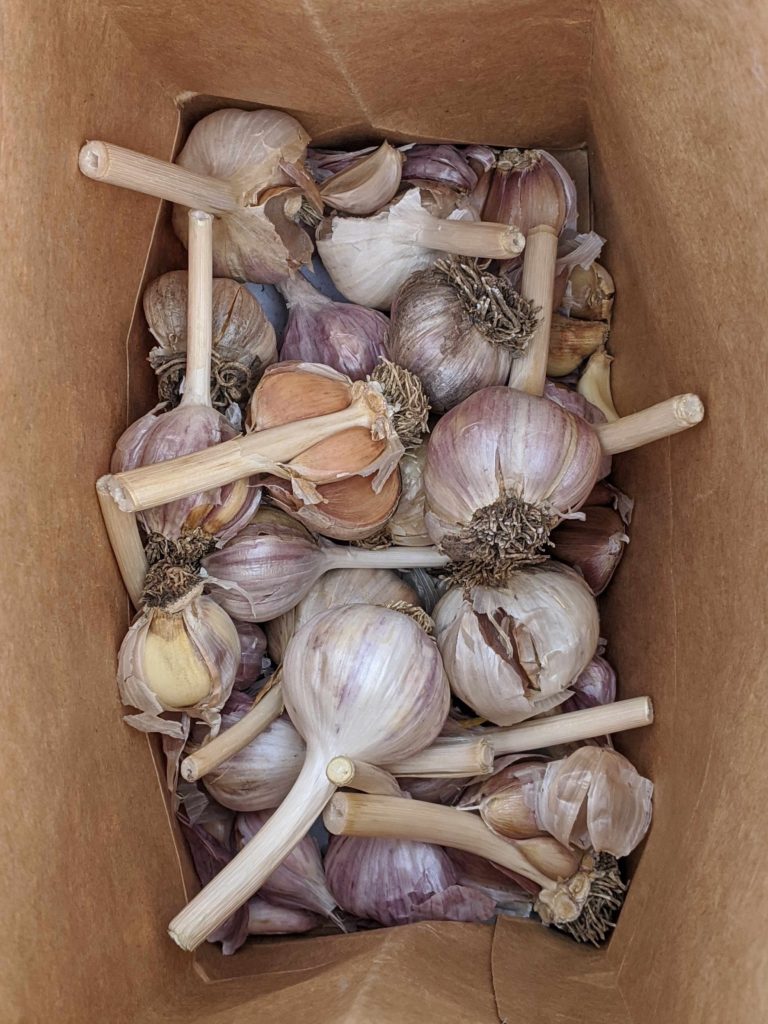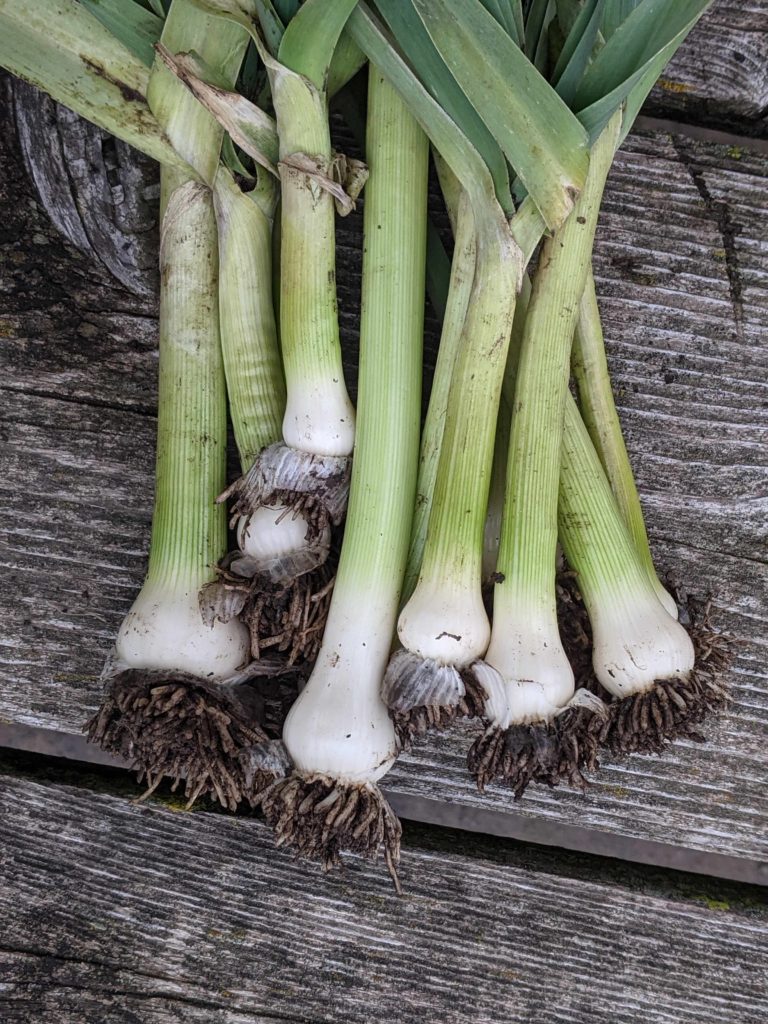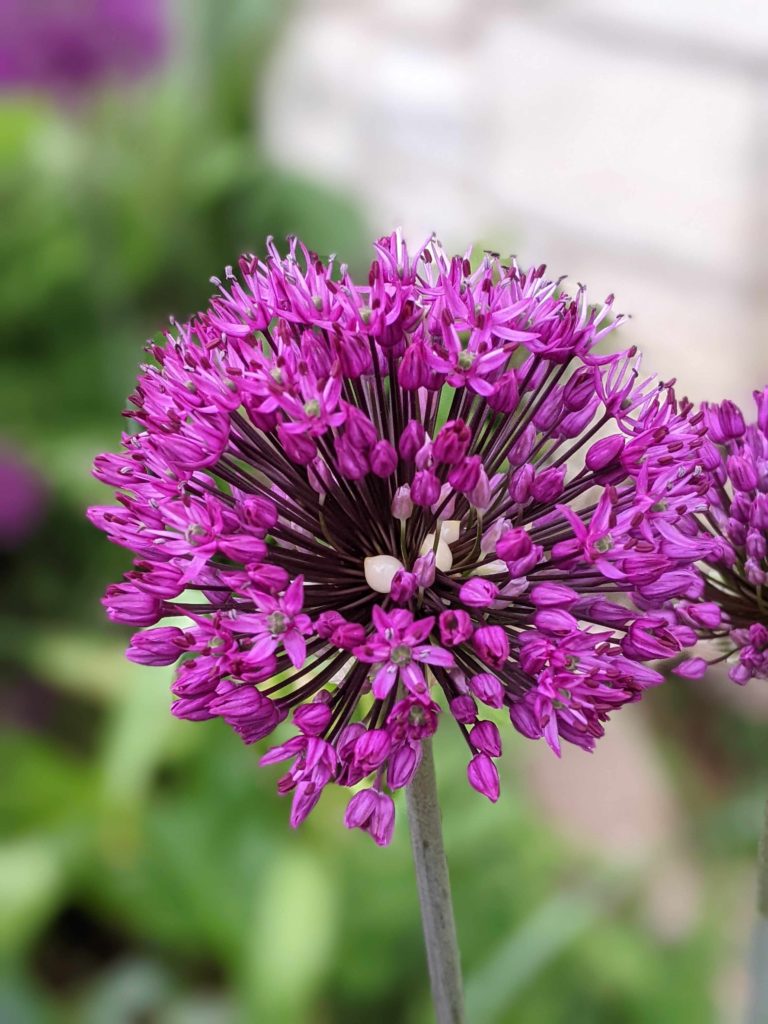Part of the Eat Your Greens series. See all the delicious ways you can eat your greens!
alliaceous
: resembling garlic or onion especially in smell or taste
For Wisconsin gardeners, spring is a tumultuous time of year full of excitement and dashed hopes. It’s also a time when little is growing, making the things that are growing take supernatural significance. In that sense, nothing proves their worth more than alliums.
Alliums are a group of plants you need to know. They include familiar favorites such as garlic, leeks, chives, onions, shallots, and scallions as well as less familiars such as walking onions, ramps, wild onions, and more. Most of them form bulbs that reproduce yearly, making them easy-to-grow perennials, and most have edible leaves and bulbs.



Alliums are interesting on several levels (see Garlic, Onions, and Other Alliums). Not only are they among the first things to eat in spring, but they are packed with beneficial nutrients when we need them most after a long, dark winter. Although my background in science generally prevents me from taking most “home remedies” at anything but face value, I swear by eating a few cloves of raw garlic when I feel a cold coming on. Garlic and Other Alliums is a fascinating book about all things allium including research on promising medicinal and dietary uses for this group of plants. In addition to cruciferous vegetables, alliums are likely to be the most effective of all the raw vegetables at cancer prevention (Eating on the Wild Side). What works for people works for plants as well: Allium oils and extracts are purportedly effective as natural pesticides, and planting alliums with other vegetables can repel pests.
I tend to think of alliums interchangeably, to some extent. Not only are there many similarities that make them easy to substitute for one another, they can actually be difficult to distinguish. This is because the boundaries between the species are often unclear even to scientists—who identify anywhere from 200-1,000 allium species. In any case, often some oniony-looking thing comes up in my garden and, though I’m not sure what it is exactly, I know I can use it in something that needs a kick.
That garlicky kick we love comes from the sulfurous chemical compounds which give alliums their alliaceous aroma and bite. The flavor varies according to the sulfate content of the soil they grow in; in the absence of ground sulfur, they lose their bite entirely.
How to Cook with Alliums
The bite of alliums makes them a natural seasoning for both raw and cooked dishes. They pair well with starches like pasta, bread, and potatoes and effectively cut through the fat of meat dishes. In my view, there’s nothing better than loading handfuls of chopped chives on some mashed potatoes or pasta; frying up onions, leeks, or shallots as a base for literally anything (or even eating them just on their own); or liberally sprinkling a dish with allium salt (see recipe below).

Allium leaves lend themselves best to raw or lightly cooked dishes—chives, scallions, and garlic or onion leaves can all be used interchangeably here. The bulbs—such as onion, garlic, and leek—can be cooked as part of stir fries, as the base of soups, or cooked in fat and eaten on their own.

Here are some other ideas for alliums:
- Pesto. I love the chive pesto recipe, which works well with any starch
- Chive or shallot vinaigrette
- Young or green garlic (before it has formed the bulb) can be used where you would use garlic such as in soup or pesto (see lovage green garlic pesto)
- Frittatas; for these, I draw inspiration from Persian cuisine, which features herbs prominently in spring (see Persian frittata with walnuts or Persian frittata with potato and pomegranate)
Interestingly, the sulfurous compounds that give alliums their bite behave in different ways. Chopping garlic intensifies the pungency, but chopped onions quickly lose their pungency. Moral of the story: Chop garlic first and let it sit for 5-10 minutes but use chopped onion (and leeks) immediately. If you are only using part of an onion, consider sautéing the remainder in oil or butter to better preserve its flavor rather than sticking the remaining bit of raw onion in the refrigerator.
Finally, preserve the seasoning yearlong with a dried allium salt!

| Allium Salt Recipe |
| Ingredients: 2 cups chopped allium leaves (e.g., garlic, chives, ramps) 1 cup coarse kosher salt 1 cup sea salt Zest from 4-5 lemons |
| Directions: Combine the chopped allium leaves with the salt and lemon zest on a baking pan. Place in the oven on the lowest heat setting (mine is 175) for about an hour, checking every 20 mins to stir the salt around. Once the leaves are dried or almost dry you can turn off the heat and leave in the oven overnight to cool. Pulse everything in a food processor to a fine texture (or leave clumpy if you prefer). Yields about 3 cups of salt. |
Allium Relationships
For those who want to know more, here’s a quick breakdown of different allium species. Their relationships may surprise you; for example, elephant garlic—the big garlic often found at grocery stores—is more closely related to leek than to true garlic!
Common varieties
Leek, elephant garlic, pearl onion, kurrat or Egyptian leek (A. ampeloprasum)
Onion, shallot, scallion or green onions (A. cepa)
Garlic (A. sativum)
Chives (A. schoenoprasum)
Less common varieties
A. chinense (Chinese onion or rakkyo)
A. fistulosum (Welsh or Japanese bunching onion)
A. tuberosum (Chinese or garlic chives)
A. stipitatum (Persian shallot)
A x proliferum (tree or walking onion)

Tree or walking onions are among the easiest alliums to grow and can spread rapidly given the unique way they grow. They multiply via little bulbs or “offsets” that weigh down the stalk, drooping its leaves to touch the ground where the bulbils “walk” and grow into a new plant. These cute little bulbils can be eaten fresh or pickled.
Wild varieties
Ramps (A. tricoccum)
Wild onions of various species (for example, A. acuminatum, A. anceps, A. angulosum, A. canadense, A. cernuum, A. ramosum)


Ramps are among the easiest edible things to forage in the wild. They are quite strong and best used in small quantities, say in ramp salt or buttermilk ramp biscuits.
Indigenous people throughout North America have used different species of wild onions available in their location in ways that echo many of the uses described above, most commonly as a seasoning or spice to flavor foods. For example:
- Raw leaves and flowers used as a garnish for salads, soups, and potatoes
- Chopped and/or dried bulbs used to season dishes, soup, sauces
- Leaves cooked into a relish or condiment
- Cooked bulbs (often roasted in pits) pressed into cakes or cooked in fat
- Bulbs pickled
- Bulbs and leaves preserved in salt
- Bulbs and leaves stir fried with meats and other vegetables

